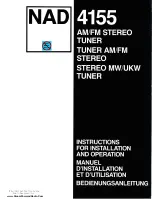
ADS-B FDL-978 Series and
Lite Series Installation Manual
Document No. 87343 Rev G
FFS Copyright © 2016 All rights reserved.
3-7
Table 4. Display Output Configuration Settings
Configuration Item
Default
Setting
Max Targets Output
max
Chelton CSA Enable
(4)
disable
Traffic Velocity Validation
(5)
enable
Display Data Output
(6)
traffic&fisb
(4)
Chelton CSA Enable is not configurable on the TC978.
(5)
Traffic Velocity Validation is not configurable on the TC978.
(6)
Display Data Output is not configurable on the TC978.
Refer to Section 3.5.2.13.3 for detailed information on determining the proper
display output settings in this table.
3.3.2 FDL-978 Series Serial and ARINC Port Configuration Details
The FDL-978 Series installations require data interfaces to other equipment for complete aircraft
installation. The available data interfaces are Control Input (Transceiver Only), GPS Input,
Altitude Input, TCAS Input, Display Output, GPS Output, and GPS Predictive RAIM Input. The
FDL-978 Series Serial and ARINC ports must be configured to enable these data interfaces and
are described in the table below:
Table 5. FDL-978 Series Installation Data Interfaces
Interface
Description
Control Input
Control inputs such as Flight Plan ID (Squawk Code), call sign, and mode
control (IDENT, Altitude Inhibit, transmit Standby) are needed by the FDL-
978-XVR. The TC978 provides control or the FDL-978-XVR can be
configured for other control formats. If a control format is configured and
functional with the TC978 installed, the TC978 displays control status but will
not accept control inputs. Serial port 2 is typically used for control input.
Control Input is NOT required for receive only systems.
GPS Input
The FDL-978 Series requires position, velocity, time, and integrity data from
a GPS sensor. The internal GPS or an external GPS must be configured to
provide this data. GPS Input is required for all FDL-978 systems.
Altitude Input
The FDL-978 Series requires external pressure altitude data input from an
altitude/air data sensor (ADS). Altitude rate and airspeed will be used if
available in the configured protocol. Pressure altitude data output can also
be configured to share with a transponder. Serial port 4 is typically used for
Altitude Input. Pressure Altitude Input is required for all FDL-978 systems.
Heading Input
The FDL-978 Series can optionally receive aircraft true heading data. True
heading is sent in UAT transmit messages on the ground and is also used to
more accurately correlate TCAS and ADS-B Traffic. Heading input is not
required but desirable with TCAS installations.
















































